Force transmission at the handle
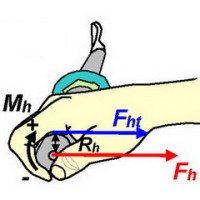
New data obtained using the recently developed BioRow 4D handle force sensor (RBN 2021/06) allows derivation of fine details of force transmission from rower to oar. A pulling angle Axy at the handle in the horizontal plane XY can be derived using the normal Fn and axial Fa forces:
Axy = atan(Fn/Fa) (1)
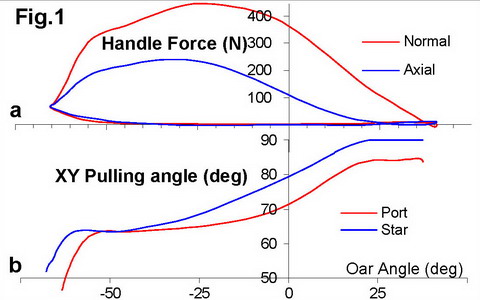
The pulling angle Axy was found to be about 60-65deg during the first third of the drive (Fig.1), then it increases up to 80-90deg before finish. The pulling angles were verified using rower-oar geometry taken from birds-eye view footage (Fig.2). Good correspondence was found between the oar shaft-forearm angles and the pulling angles derived from the above forces analysis. This means that pulling directly in line with the forearm is the main method of force transmission and torque from the pectorals plays negligible role (in this specific sculler).
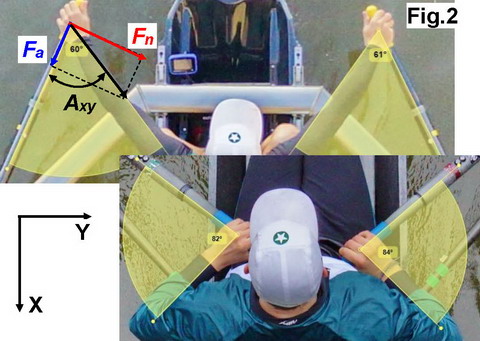
A pulling angle in sagittal XZ plane can be obtained similarly from the ratio of the vertical Fv and normal horizontal Fn forces (Fig.3):

Axz = atan(Fv/Fn) (2)
Verification with video analysis (Fig.4) also revealed good correspondence: the handle is pulled at 12-15deg upwards during the first half of the drive, then the pulling angle becomes more horizontal and decreases down to 4-6deg.

The fourth new variable measured with the BioRow 4D handle is the torque Mh, which is created by asymmetrical force application at the grip (Fig.5). If a rower would pull the handle exactly at its central axis, then the torque would be zero, but usually more force is applied at the handle top, so the positive direction of the torque was set towards feathering the blade.
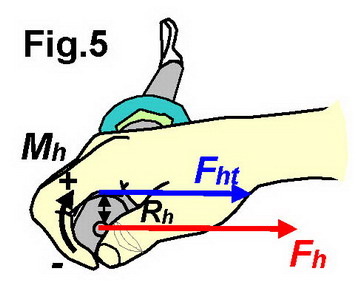
The handle torque was found at 5-6Nm during the first half of the drive (Fig.6), then it decreases down to 1-2Nm “after the pin” and raises again up to 2-3Nm before the finish to feather the oar.
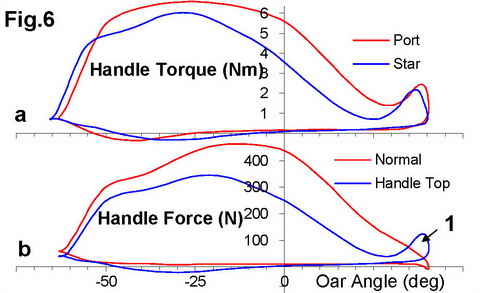
The torque Mh can be converted into the force applied to the handle surface F(M) using the radius of the handle Rh (17.5mm in this case):
F(M) = Mh / Rh (3)
Comparison of the normal handle force Fn with one created by the torque F(M) (Fig.6,b) shows that the handle force is applied asymmetrically, mainly at its top surface. During the drive, the handle torque is balanced by the opposite reaction torque at the gate (and possibly, at the blade), but before the finish (1), the handle torque dominates to feather the oar.
Newly data obtained with the BioRow 4D handle allows for better understanding of Rowing Biomechanics, fine analysis of individual rowing technique and rigging specifics (say, effect of span/spread, oar pitch, etc.).
©2021 Dr. Valery Kleshnev www.biorow.com



